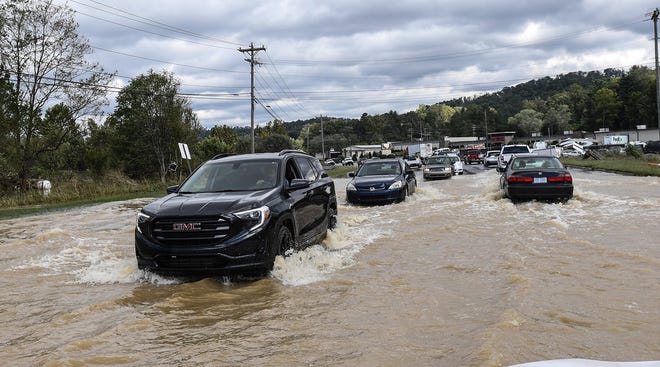- Flooding from Hurricane Helene has submerged roads and vehicles across the Southeast.
- Experts say it is not necessarily more likely for an electric vehicle to catch fire due to flooding.
- If flooding actually does cause an electric vehicle to catch fire, it is likely because collision or water intrusion has caused its battery to short circuit.
In addition to killing more than 100 people and causing power outages for nearly 1.6 million customers, Hurricane Helene has submerged roads and vehicles across the Southeast.
Since the system’s landfall in Florida’s Big Bend area late Thursday, torrential rain has destroyed vehicles and homes throughout Florida, the Carolinas, Georgia, Tennessee and Virginia. Officials have carried out hundreds of water rescues in flooded areas.
At least 133 deaths have been caused by the catastrophic storm, according to the The Associated Press. Floods and landslides have caused houses to float away, bridges to crumble, grocery store produce to flow into the streets and semi-trucks to be tossed into mangled piles.
Ahead of Helene’s arrival, Florida Gov. Ron DeSantis warned electric vehicle owners to get to higher ground and avoid the risk of fire.
“If you have an EV, you need to get that to higher land,” DeSantis said at a Wednesday news conference. “Be careful about that getting inundated. It can cause fires.”
Flooding from Hurricane Ian, which killed 156 people in 2022, damaged an estimated 358,000 vehicles in Florida and the Carolinas. However, only 21 electric vehicles are known to have caught fire, far fewer than what officials initially warned.
Here’s what to know about whether flooding impacts electric vehicles.
Can submerged electric vehicles catch on fire?
Experts say it is not necessarily more likely for an electric vehicle to catch fire due to flooding with only a small percentage of registered EVs doing so, according to USA TODAY analyses.
For every 100,000 electric vehicles, 25 catch fire annually, statistics compiled by AutoInsuranceEZ show.
However for every 100,000 gas-powered cars, 1,530 fires are reported a year primarily due to fuel leaks or crashes.
Why do flooded electric vehicles catch fire?
If flooding actually does cause an electric vehicle to catch fire, it is likely because collision or water intrusion has caused its battery to short circuit.
This rare event is called a thermal runaway, when the battery cell discharges energy and heats up from one cell to the next, causing a fire.
What do if your vehicle is submerged?
If your vehicle stalls in rising waters, do not attempt to restart it, as this could cause further damage to the engine and components.
Instead, AAA urges you to leave the vehicle immediately and move to higher ground or a safe location.
Tesla recommends following these three steps if your vehicle is submerged:
- Contact your insurance company.
- Do not attempt to operate the vehicle until it’s inspected by an authorized shop.
- Tow or move the vehicle at least 50 feet from structures, cars, personal property and any other combustible materials.
What to do after is recovered from flooding?
Before using your submerged vehicle after it’s recovered, AAA experts recommend assessing the damage. The severity of the damage will depend on how high the water got. If the water stayed below your doors, your car likely didn’t sustain much damage.
However, if water did rise above the bottom of your doors, they advise those to not make any attempts to restart the vehicle. Doing so could allow water to get inside your engine, causing irreversible damage.
Contributing: Kinsey Crowley, Elizabeth Weise and Samantha Neely


